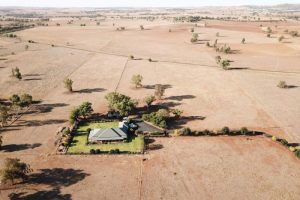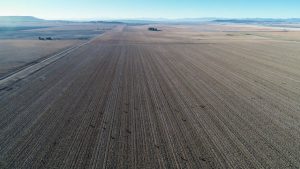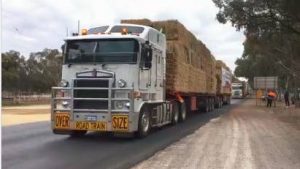This cannot be said of governments’ response to drought support once evidence of the human cost is in the public eye, Gregory says. The question is whether ad hoc responses to human (and animal) suffering would not be better within a settled, planned approach to rainfall variations.
In the article below, Gregory describes the history of drought policy since 1971, and argues that “a rigorous and rational approach to national drought policy” remains illusory.
Given the impact of climate change on weather patterns, the challenge of agreeing on a rational policy for drought has become even greater, he says.

Gordon Gregory writes:
Drought has pervasive and deleterious impacts on the health of individuals, families, communities and even whole regions – as well as potentially serious ecological effects.
Its management is therefore an important issue for the health sector, in environmental management, and for the planning of physical infrastructure.
Given its importance, some people may be surprised to learn that the declaration of drought in a particular area of Australia is not the result of measurement against objective criteria such as weeks without rain, soil moisture or river flows.
Instead, drought declarations have been and continue to be made by governments (or ministers, in the case of ‘Exceptional Circumstances’) on the basis of a subjective assessment that there is insufficient grazing or water available to sustain sheep or cattle and that stock therefore have to be moved, hand fed and/or watered.
(Current arrangements for early withdrawal of Farm Management Deposits, or FMD, do actually include one objective criterion, being that “an area of your primary production property has been affected by rainfall for that six-month period within the lowest five percent of recorded rainfall for the property”. There is a FMD rainfall analyser on the Bureau of Meteorology website.)
In NSW and Queensland, drought declarations are made on the basis of local government areas or Pastures Protection Board districts. This makes it possible to say, for instance, that “60 per cent of Queensland was drought-declared in 2013”. Awkward boundary issues arise from such an approach, with adjoining properties somewhere bound to be treated differently.
So the status of a particular area with respect to drought is subject to two things: one, the observed situation relating to pasture and crop growth, river and creek flows, on-farm water storages and soil moisture; and two, politics. This article focuses on the second of these.
Organisations working for a particular cause within Australia’s government system or civil society are often judged by the extent to which they succeed in getting their cause or issue onto the political agenda.
Lessons can perhaps be drawn for this challenge from what has happened over the last eight weeks in Australia with respect to drought. Despite below-average rainfall for up to seven years in some areas of New South Wales and Queensland, in May 2018 there was scarcely a whisper about drought.
Now, in the first half of August, there is wall-to-wall coverage of ‘The Big Dry’.
How did this happen? What role did farmers, politicians and the media play in getting support for drought assistance measures this time around? Are things being learned for future management of dry conditions? Has the situation been reflected accurately or has there been exaggeration?

First, some history
On Thursday 14 February 1991, Toowoomba’s City Hall was the venue for day one of the first National Rural Health Conference. What began there on that day has resulted in Toowoomba being seen by many people as the spiritual home of Australia’s rural and remote health sector.
Coincidentally, almost exactly 27 years later, on 1 February 2018, Prime Minister Malcolm Turnbull gave his first major speech of the year in Toowoomba’s Empire Theatre Hall.
Described as a Keynote Address, the Prime Minister talked about Australian values, Government achievements, the economy, innovation, infrastructure, energy prices, health and education funding, free trade agreements, Enterprise Tax Plan, income tax, wages growth and the Budget.
The Prime Minister’s speech was setting the agenda for the new calendar year.
It made no reference to drought or rainfall.
It is often said that, at any given moment, there is a drought somewhere in Australia. The (happy) corollary of this is that it is very rare for the whole country to be in drought at the same time.
There have been numerous reviews and inquiries into drought policy and how it should be handled by Commonwealth and State/Territory Governments: from John Lovett’s of 1973; to James Balderstone’s of 1982; Peter McInnes’s of 1990; that of Linda Botterill and Melanie Fisher of 2003; and the Productivity Commission’s of 2009.
The overall conclusion of the McInnes Report was timeless and typical:
– the Commonwealth Government, in conjunction with State and Territory Governments, should implement a national drought policy as a matter of urgency.”
Why has this not happened?
The challenge for a potential National Drought Policy was, and remains, to balance production efficiency and welfare. It is almost impossible to separate the two. The very existence of drought support, or the mere expectation of it, affects farmers’ planning decisions before, during and after droughts.
Drought policies need to be consistent with national rural adjustment and environmental objectives. Ideally they need to give consideration to issues as diverse as social welfare, maintenance of the livestock gene pool, land management, animal welfare and infrastructure planning.
The situation has become even more difficult because of the greater dynamism and uncertainty given to rainfall patterns by global changes in climate.
From 1971-1989 drought support was provided under the Natural Disaster Relief Arrangements (NDRA). Sometimes Nature liked to highlight the irony of the different purposes of the NDRA, as in April 1988 when the Commonwealth was funding 75 percent of both drought and flood relief for Queensland!
In their (Constitutionally-given) drought declaration duties, each State has had its own criteria. But given the arrangement for the Commonwealth to start funding support once the State has reached a specified level of expenditure, there is always a financial incentive for the States “to declare quickly and revoke slowly”.
The general approach has been to declare the existence of drought in a particular area on the basis of an assessment that there is insufficient grazing or water available to sustain sheep or cattle and that stock therefore have to be moved, hand fed and/or watered.
These judgments are easier to make with reference to pastoral industries than to cropping. With the latter, judgments are even more difficult because of the impact of future rainfall on what might be seeded and what might in future be produced and harvested.
In NSW and Queensland, drought declarations have been made on the basis of local government areas or, in NSW, by Pastures Protection Board districts. This ‘lines on the map’ approach is the basis for statements such as “60 per cent of Queensland was drought-declared in 2013”. However, as with all such geographic matters, boundary issues arise, with some adjoining properties bound to be treated differently.

Politics at play
The inherently political nature of drought declaration runs counter to a rational approach. It has long been recognised that drought policy should include measures to encourage preparation by individual farmers, catchment authorities, and governments – in the case of the last, if for nothing else, for the planning and management of water infrastructure.
In his definitive record of his time as Minister for Primary Industries and Energy, John Kerin has written:
… no rigorous economic approach, based on risk management, could ever be politically maintained, once intense and long droughts started to bite and once the media highlighted dead and starving stock, withered crops, rural unemployment, bankrupt farmers and graziers and destitute families… droughts highlight the problem of trying to reconcile efficiency and welfare considerations, which inevitably becomes a political question.”
The current drought’s emergence into the public consciousness and the consequent actions by Commonwealth and State Governments have again illustrated the political aspects of the issue.
There are regular ‘hand on heart’ agreements that rationalist or ‘strategic’ approaches need to be taken to planning for dry times and treating drought as a manageable risk, and plenty of valuable but underutilised intellectual capital has been invested in the matter (as per this article, Using adaptive governance to rethink the way science supports Australian drought policy).
But then, at a certain point in the cycle, comes the emotion and the related politics. And because the Commonwealth has a long history of coming to the party to back up the States, it is impossible for them to resist the option of such things as interest rate subsidies, carry-on loans and support for freighting feed, water and stock.
A related and recurring issue is whether there should be support for the small businesses, economies and employment of country towns affected by drought and, if so, the means by which it should be provided. Usually this has been put in the too-hard basket until the drought is over; when it is no longer seen as an issue.
(The impact of drought on rural communities was described in a 2004 report, Social Impacts of Drought, while mental health, drought and climate change are discussed in The Climate Institute’s 2011 report (pictured below), A Climate of Suffering: the real cost of living with inaction on climate change).
 There have nevertheless been some tangible improvements to the system. The severity of the 1980-83 drought was one of the drivers for John Kerin to establish the Rural Financial Counselling Service, the services of which have been lauded by the Prime Minister and his Ministers over the past few weeks.
There have nevertheless been some tangible improvements to the system. The severity of the 1980-83 drought was one of the drivers for John Kerin to establish the Rural Financial Counselling Service, the services of which have been lauded by the Prime Minister and his Ministers over the past few weeks.
Only in ‘Exceptional Circumstances’
From 1997 to 2012 the key term used was not “declaration of drought” but ‘Exceptional Circumstances’ (EC). This was generally described as (but not universally accepted as) “rare and severe events that farmers cannot be expected to manage for longer than 12 months, and which only happen every 20-25 years”.
Apart from anything else, this definition failed to allow for the fact that global climate change has altered rainfall and heat patterns and thus the frequency and severity of droughts.
Responsibility for declaration of Exceptional Circumstances fell to the Federal Agriculture Minister, but with the States retaining their own measures such as transport and fodder subsidies. Family support payments and interest rate subsidy schemes were re-birthed as the EC Relief Payment.
The cycle of policy review/dry times/political response continued.
2001 saw the beginning of a run of dry years, seen retrospectively as the Millennium Drought – “the longest uninterrupted series of years with below median rainfall in southeast Australia since at least 1900”.
The Coalition Government held firm for some time on the grounds that payments to farmers constituted ‘middle class welfare’.
The farm lobby led a successful public relations campaign and some $900 million was allocated to the EC program and household support was made more readily available. The Commonwealth spent $2.6 billion on interest-rate subsidies between mid-2001 and the end of 2011.
During this period the EC arrangements gained a poor reputation, with anecdotal evidence that many farmers who needed support couldn’t get it, some who got it really didn’t need it, and that poor farming and management practices were being propped up by government money.

Further reviews
There were further reviews of drought policy in 2008-09, with an Expert Social Panel calling for an increased focus on people, on preparing for drought, and for greater government support of community, health and mental health programs in drought-affected areas. The Panel also commented on the negative effects of a continual focus in the media on the existence of ‘drought’.
In 2009 the Productivity Commission again recommended the abolition of interest rate subsidies and of EC declarations.
The Millennium Drought started breaking across the country from 2009, before major floods arrived in the summer of 2011.
The EC system came to an end in 2012, with interest rate subsidies replaced by the Transitional Farm Family Payment (TFFP), paid at the Newstart rate and initially subject to an assets test threshold of $1.5 million.
The Labor Government introduced the Farm Finance Scheme (FFS), conceived as a rural debt relief package but increasingly used as a delivery mechanism for concessional loans to drought-affected farmers. It included $420 million over two years for concessional loans, funding for additional Rural Financial Counsellors, and changes to make it easier for farmers to access the Farm Management Deposit scheme.
After the 2013 Federal Election the Coalition directed funds from the FFS to the drought-hit states of Queensland, NSW and Victoria.
In January 2016 NSW’s Independent Pricing and Regulatory Tribunal reported as follows:
In July 2014, the Intergovernmental Agreement on National Drought Program Reform (the IGA) came into effect. This agreement between the Commonwealth and state and territory governments aims to ensure that government-funded drought programs not only support farmers in times of hardship, but also help them adapt to and prepare for the impacts of increased climate variability and adopt self-reliant approaches to managing their business risks. (IPART, NSW Drought Program Evaluation Framework – Other Industries — Final Report January 2016).
Plus ça change. Linda Botterill, an authority on drought policy, has observed that the intergovernmental agreement on drought policy reform signed by all governments in May 2013 looks very much like the one agreed in 1992 in terms of both content and underpinning principles.
But the names continued to change. The TFFP became the Farm Household Assistance program (FHA) in 2014 – which brings us to the events of 2018…
• Gordon Gregory is a former CEO of the National Rural Health Alliance. Read his previous articles at Croakey. His next article will examine how today’s drought came rapidly to be a high profile public issue that governments could not ignore.
